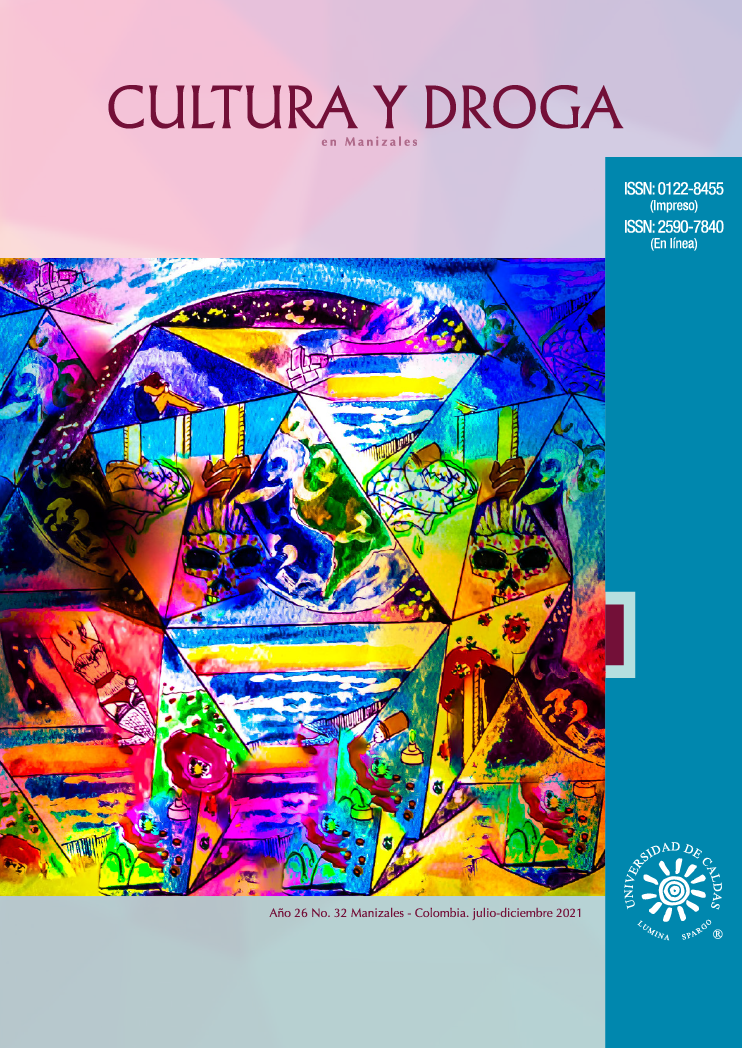Authors
Abstract
The objective of this study is to analyze the relationship between the use of heroin in Colombia and the criminal worlds from autoethnographic reflection, given the author personal experience with heroin. To do this, a qualitative methodology was developed, applying the methodological framework of autoethnography through autobiographical writing. The results were captured in five thematic nuclei: (1. Preamble "Ceremonies of degradation and monstrosities"; 2. Trap houses, red-light districts, delinquency and the popular; 3. Trap houses, between the popular and the liminal; 4. Outside the trap houses, the author became a criminal; 5. What is crime and who is considered a criminal? In the conclusions, emphasis is made on how the management of drugs in Colombia and its legal implications determine that in the social imaginary there is a linear relationship between the use of heroin and crime, turning the heroin user into a criminal by law. It is also highlighted how the burden of the stigma of heroin use is relentless even within the same spaces shared with users of other substances whose legal framework has justified their greater social acceptance such as marijuana and cocaine, relegating heroin users to liminal spaces such as trap houses where criminal acts such as trafficking, robbery, and murder are witnessed but where the user does not necessarily commit these crimes, and situations where users are totally exposed, such as begging or prostitution. Finally, it is pointed out how trap houses, being at the same time dark and gloomy spaces, also become spaces that protect from inquisitive glances, a protection space out of which users are exposed to be identified as criminals, judged and mistreated just for being recognized as heroin addicts and carry the substance.
Keywords:
References
Arfuch, L. (2002). La imaginación autobiográfica. Dilemas de la subjetividad contemporánea. Fondo de Cultura Económica.
Bajtin, M. (1994). La cultura popular en la Edad Media y en el Renacimiento: El contexto de François Rabelais. Alianza Editorial.
Baratta, A. (2004). Criminología crítica y crítica del derecho penal: Introducción a la sociología jurídico penal. Siglo XXI Editores.
Becker, H. (1963). Outsiders: Studies in the sociology of desviance. The Free Press of Glencoe.
Congreso de la República de Colombia. (1986). Ley 30 de 1986. Por la cual se adopta el Estatuto Nacional de Estupefacientes y se dictan otras disposiciones. https://www.redjurista.com/Documents/ley_30_de_1986_congreso_de_la_republica.aspx
Congreso de la República de Colombia. (2000). Ley 599 de 2000. Código penal colombiano. http://perso.unifr.ch/derechopenal/assets/files/legislacion/l_20130808_01.pdf
Ellis, C., & Arthur, B. (2003). Autoethnography, Personal Narrative, Reflexivity. Researcher as Subject. Norman Denzin e Yvonna Lincoln Editors.
Feixa, C. (2018). La imaginación autobiográfica. Editorial Gedisa.
Foucault, M. (2006). Seguridad, territorio, población. Curso en el Collége de France (1977-1978). Fondo de Cultura Económica.
Garfinkel, H. (2006). Estudios en etnometodología. Editorial Anthropos.
Haraway, D. J. (1991). Ciencia, cyborgs y mujeres: La reinvención de la naturaleza. Editorial Cátedra.
Lemert, E. (1951). Crime and Deviance: Essays and Innovations of Edwin M. Lemert. C.C. Lemert and M. Winter. Rowman & Littlefield.
Lemert, E. (1967). Social problem and social control. Prentice Hall.
Maréchal, G. (2010). «Autoethnography». En A. J. Mills, G. Durepos & E. Wiebe, ed. Encyclopedia of Case Study Research. Sage.
Martín-Barbero, J. (1987). De los medios a las mediaciones. Comunicación, cultura y hegemonía. Editorial Gustavo Gili.
Romero-Miranda, A. (2015). La socialización infame: una mirada desde la psicología social. Revista de Psicología. Universidad de Antioquia, 7(1), 211-218.
Sepúlveda, M. (2011). El riesgo como dispositivo de gobierno en el campo de las drogas: exotización, vicio y enfermedad (tesis de doctorado). Departamento d›Antropologia, Filosofia i Treball Social. Universitat de Rovira y Virgili.
Tannenbaum, F. (1938). Crime and the Community. Columbia University Press.
Turner, V. (1980). Social Dramas and stories about them. Auslander Philip.
Van Gennep, A. (1969). Los ritos de paso. Alianza editorial.

 PDF (Español)
PDF (Español)
 FLIP
FLIP
 Perfil Google Scholar
Perfil Google Scholar





















